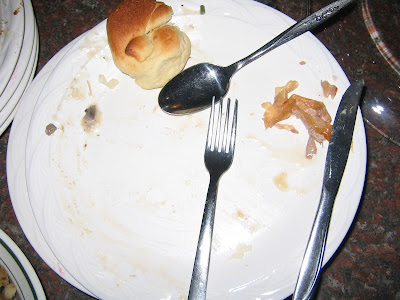Muhammad Yunus has had phenomenal success helping people lift themselves out of poverty in rural Bangladesh by providing them with credit without requiring collateral. Yunus developed his revolutionary micro-credit system with the belief that it would be a cost effective and scalable weapon to fight poverty.
Yunus told his story and that of the bank in the book "Banker to the Poor," co-authored by him and Alan Jolis. In the book, Yunus recalls that in 1974 he was teaching economics at a Chittagong University in southern Bangladesh, when the country experienced a terrible famine in which thousands starved to death.
"We tried to ignore it," he says. "But then skeleton-like people began showing up in the capital, Dhaka. Soon the trickle became a flood. Hungry people were everywhere. Often they sat so still that one could not be sure whether they were alive or dead. They all looked alike: men, women, children. Old people looked like children, and children looked like old people.
The thrill he had once experienced studying economics and teaching his students elegant economic theories that could supposedly cure societal problems soon left him entirely. As the famine worsened he began to dread his own lectures.
"Nothing in the economic theories I taught reflected the life around me. How could I go on telling my students make believe stories in the name of economics? I needed to run away from these theories and from my textbooks and discover the real-life economics of a poor person's existence."
Yunus went to the nearby village of Jobra where he learned the economic realities of the poor. Yunus wanted to help, and he cooked up several plans working with his students. He found that one of his many ideas was more successful than the rest: offering people tiny loans for self-employment. Grameen Bank was born and an economic revolution had begun.
***
Grameen Bank has reversed conventional banking wisdom by focusing on women borrowers, dispensing of the requirement of collateral and extending loans only to the very poorest borrowers. In fact, to qualify for a loan from the Grameen Bank, a villager must demonstrate that her family owns less than one half acre of land.
The bank has provided $4.7 billion dollars to 4.4 million families in rural Bangladesh. With 1,417 branches, Grameen provides services in 51,000 villages, covering three quarters of all the villages in Bangladesh. Yet its system is largely based on mutual trust and the enterprise and accountability of millions of women villagers.
Today, more than 250 institutions in nearly 100 countries operate micro-credit programs based on the Grameen Bank model, while thousands of other micro-credit programs have emulated, adapted or been inspired by the Grameen Bank. According to one expert in innovative government, the program established by Yunus at the Grameen Bank "is the single most important development in the third world in the last 100 years, and I don't think any two people will disagree."
(Excerpt from http://www.pbs.org/)
Here is a great site to begin your own micro-lending: http://www.kiva.org/ (or double click on "Es Obvio" above).
Yunus told his story and that of the bank in the book "Banker to the Poor," co-authored by him and Alan Jolis. In the book, Yunus recalls that in 1974 he was teaching economics at a Chittagong University in southern Bangladesh, when the country experienced a terrible famine in which thousands starved to death.
"We tried to ignore it," he says. "But then skeleton-like people began showing up in the capital, Dhaka. Soon the trickle became a flood. Hungry people were everywhere. Often they sat so still that one could not be sure whether they were alive or dead. They all looked alike: men, women, children. Old people looked like children, and children looked like old people.
The thrill he had once experienced studying economics and teaching his students elegant economic theories that could supposedly cure societal problems soon left him entirely. As the famine worsened he began to dread his own lectures.
"Nothing in the economic theories I taught reflected the life around me. How could I go on telling my students make believe stories in the name of economics? I needed to run away from these theories and from my textbooks and discover the real-life economics of a poor person's existence."
Yunus went to the nearby village of Jobra where he learned the economic realities of the poor. Yunus wanted to help, and he cooked up several plans working with his students. He found that one of his many ideas was more successful than the rest: offering people tiny loans for self-employment. Grameen Bank was born and an economic revolution had begun.
***
Grameen Bank has reversed conventional banking wisdom by focusing on women borrowers, dispensing of the requirement of collateral and extending loans only to the very poorest borrowers. In fact, to qualify for a loan from the Grameen Bank, a villager must demonstrate that her family owns less than one half acre of land.
The bank has provided $4.7 billion dollars to 4.4 million families in rural Bangladesh. With 1,417 branches, Grameen provides services in 51,000 villages, covering three quarters of all the villages in Bangladesh. Yet its system is largely based on mutual trust and the enterprise and accountability of millions of women villagers.
Today, more than 250 institutions in nearly 100 countries operate micro-credit programs based on the Grameen Bank model, while thousands of other micro-credit programs have emulated, adapted or been inspired by the Grameen Bank. According to one expert in innovative government, the program established by Yunus at the Grameen Bank "is the single most important development in the third world in the last 100 years, and I don't think any two people will disagree."
(Excerpt from http://www.pbs.org/)
Here is a great site to begin your own micro-lending: http://www.kiva.org/ (or double click on "Es Obvio" above).
Me quedo impresionado,
P. Suave











